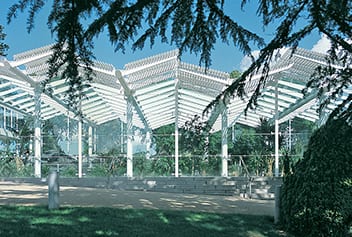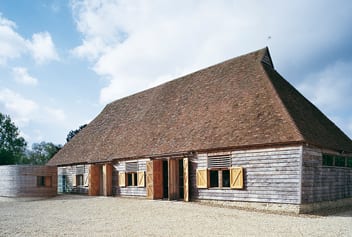John Browning (1940 – 2016)
Date posted: December 13, 2016
We are saddened to learn that John Browning, one of the founding partners of the practice, passed away recently. John led and was involved in a range of projects, many of which achieved national recognition including RIBA and Civic Trust awards, as well as accolades at local level through amenity groups such as the Winchester Trust.
He was known for his sensitive interventions, designing for place and with imaginative solutions that unlocked complex sites, such as the award-winning Dolphin development in Winchester which regenerated a constrained site in a historic city centre conservation area. The Grove School, Hounslow, where the design responded to particular constraints, with an innovative natural ventilation strategy, won Green Building of the Year award in 1992. The Temperate House in Leamington Spa was a park restoration project where the modern innovative, reinterpretation of the temperate glass house as a key component of the listed park’s regeneration. Lee & Carlisle House, Winchester restored and repurposed a Queen Anne town house, with a number of new houses and studios, which still provides the Winchester studios of the practice. The barn restoration for the Aston Martin Owners Club in Oxfordshire was a repurposed agricultural building for the club’s museum and headquarters, with modern interventions, that won RIBA South Conservation award, Civic Trust and Downland Prizes.
As important is John’s legacy in the practice, an architectural approach that is sensitive to context and the craft of making buildings, enduring principles which Keith, Richard and John established over 45 years ago. John will be sadly missed by those who worked with and knew him.
Keith Leaman, friend and fellow founding partner, has paid the following tribute:
‘I find it very difficult to write about John Browning, a colleague that I have worked with over many years through the ups and downs of a private practice that we started in 1972 with Richard Plincke.
You could see in his work various influences, his time at Cambridge University, his work with Architects Co-partnership and in particular his working time with Feilden and Mawson where he was involved on a number of prestige conservation projects including York Minster.
John had an ability to take a complicated brief, rationalise it and make the end result simple and often deeply satisfying. He was equally at home with designing and detailing new buildings as he was with his understanding of and the restoration of historic fabric. He felt it was important to always blend his architecture with the surroundings. Nevertheless, it always added a distinctive quality to the built environment in which it was situated.
The Practice, as it was then, Plincke Leaman & Browning, was fortunate in arriving in Winchester at the same time as Sir Colin Stansfield-Smith. Sir Colin recognised John’s ability and appointed us to undertake a number of Hampshire school projects. These projects enabled the practice to gain an expertise in educational buildings which in turn enabled us to branch out into undertaking many school projects elsewhere in the country, including the Channel Islands.
John Browning loved good crafted detailing and was a skilled joiner in his own right, this ability spilled over into his hobby of reconstructing another form of historic fabric, Aston Martins. He took apart and reassembled a number of Aston Martins – in particular a 1934 Aston and a very early 1923 model, both of which went on to win Concours d’Elegance prizes and are well known in the world of classic cars.
John was always supported in his endeavours by his wife Dot and his family who together with his colleagues will all miss his balanced approach to a life well lived and he leaves a legacy of some outstanding well considered, crafted buildings. Since his and my retirement the Practice carries on in Winchester and London as ArchitecturePLB.’
Keith Leaman, November 2016




